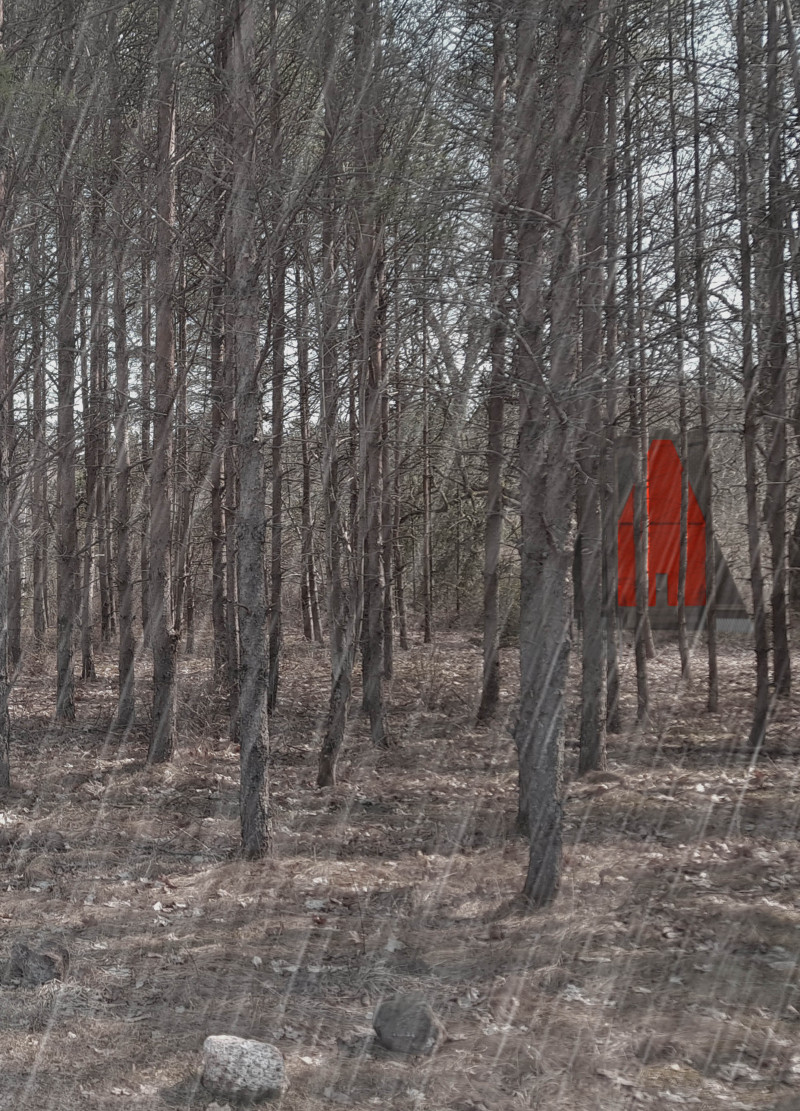5 key facts about this project
The project "Creature of the Woods" is found in the unique landscape of Kemeri Bog in Latvia. It explores the connection between visitors and the natural environment, while reflecting the region’s rich folklore and history. The design aims to let nature reclaim its space through careful planning and thoughtful integration. By reinterpreting traditional Latvian house forms, the concept engages with cultural stories and addresses the needs of contemporary users.
Cultural Context and Conceptual Framework
The design draws inspiration from Latvia's agrarian traditions, where the vernacular house features a high-pitched roof. This reference serves as more than just a functional design; it represents cultural mythology, emphasizing connections to nature and the cosmos. The proposal captures the essence of a time when practical living and mythical beliefs were intertwined, inviting curiosity and exploration within the architecture.
Integration with Landscape
The approach starts by establishing a clear distinction between the house and the landscape, treating them as separate ecosystems. As the design evolves, it incorporates natural restoration methods that allow the forest and bog to expand and intermingle with built elements. This process highlights a commitment to ecological integration, where the architecture blends with its natural setting rather than imposing on it.
Transitional Spaces and User Experience
A significant aspect of the design is the shift from a traditional house to a space that offers a gateway for engagement. Each part of the project is created to provide different experiences, guiding visitors through the mysteries of the bog. The arrangement of elements, including trees planted in a grid, contrasts with the flowing forms of the architecture, enhancing the connection between people and the landscape.
Final Design Detail
The culmination of the design is seen in the intentional cut at the edge of the forest. This feature creates clear entrance points and terraces, inviting users to interact directly with the surroundings. Such design choices blur the lines between built and natural environments, showing that the structure is not just an isolated element, but an important part of the greater ecosystem.



























